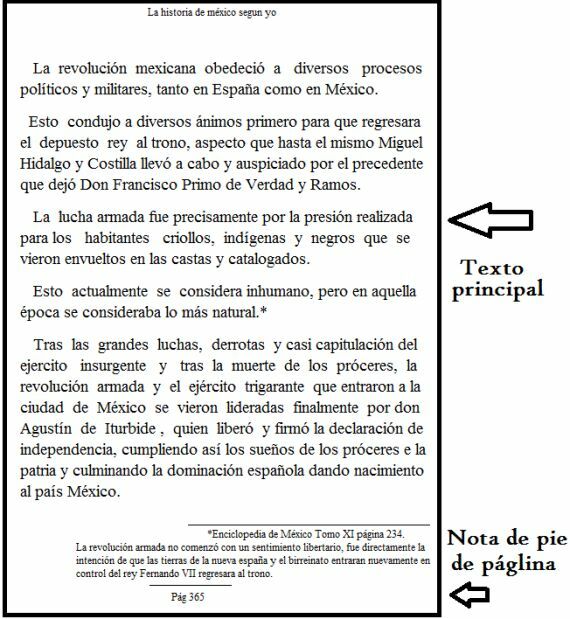Footnote Example
Science / / July 04, 2021
The Footnotes are the calls for attention that the researcher makes in her work to:
- Indicate the source from which the data comes.
- Clarify some data.
- Expand or explain the idea.
These notes are numbered progressively, either by chapter, or throughout the entire work. In school assignments it is more practical to present all the notes at the end of each chapter or at the end of the assignment. This avoids the hassle of calculating enough space to list them at the end of each page. However, putting them on the page where the reference is helps the reader to locate the information that is handled, more quickly.
If the note refers to the same author and the same book, but a different page, the word Ibídem is put, which means: the same and the page number. If the note refers to the same author, book and page, it is loc. cit. which means: cited phrase, These phrases always refer to the data of the previous note. The expression Op. Cit. means work cited and is put instead of the title of the book, so as not to repeat. The explanatory and bibliographic notes can be mixed so as not to lose the sequence of the information and make it easier for the reader.
Footnotes are also to express or expand on the topic, giving a brief explanation in the note.
Footnote examples:

- Felipe Pardinas. Research Methodology and Techniques in Social Sciences, p. 8. (bibliographic)
- Ario Garza Market. Investigative Techniques Manual, Pages 99-100
- They are also called: critical apparatus, citations, bibliographical references and notes. (clarifying)
- Ibid, p. 130
- Loc. cit.
- Felipe Pardinas. Op. Cit., P. 105
- The power of the mind, Pág 456, edit trillas 1956
- Individual guarantees, page 456, the right of protection.
- Amparo Law 2015 Article 5 Section II
- Mexican Constitution, Art 22 paragraph II
